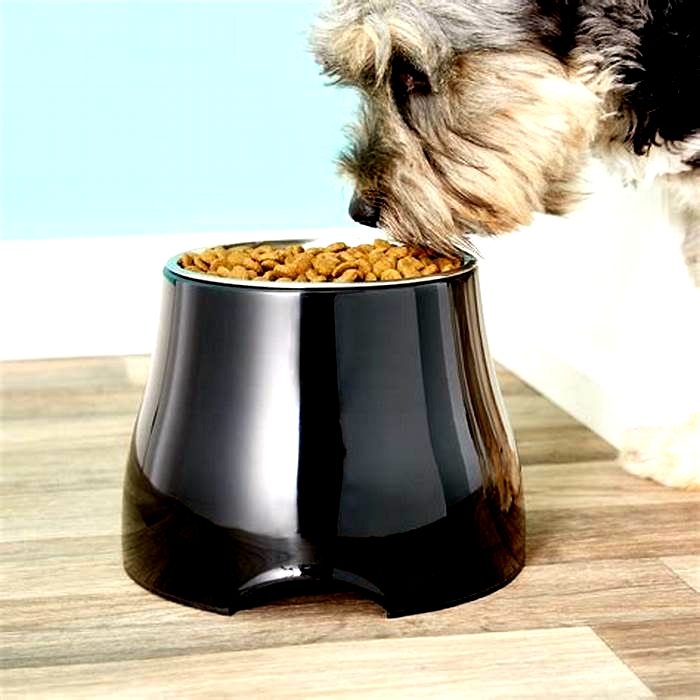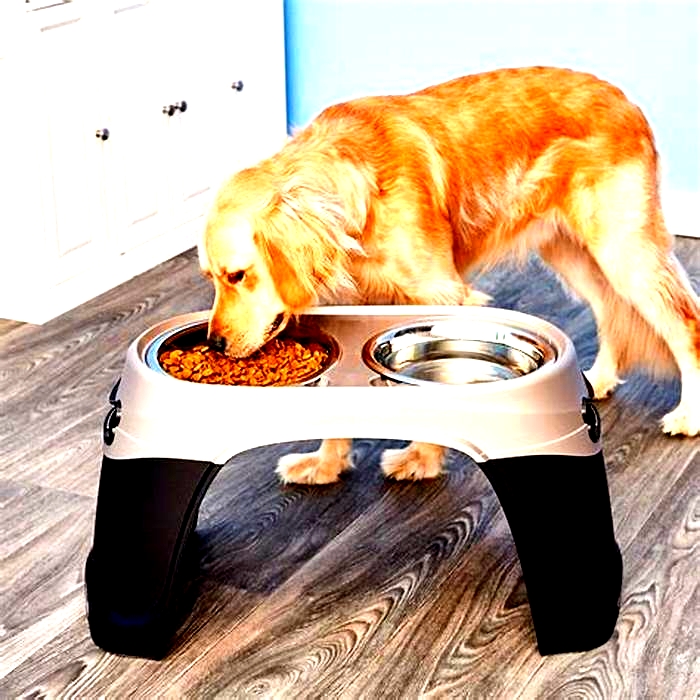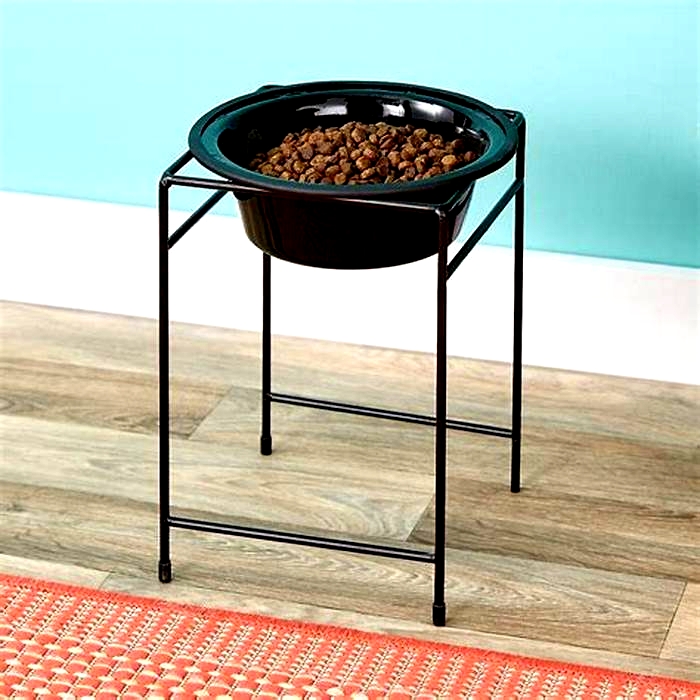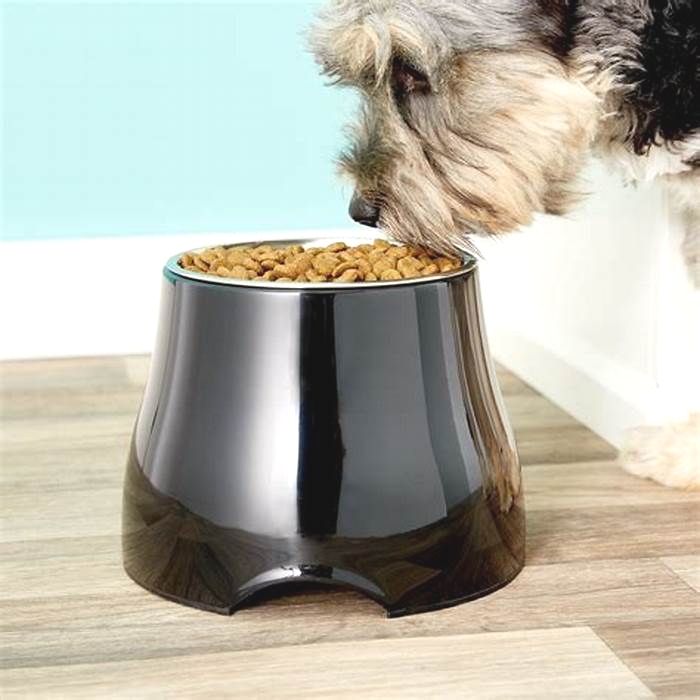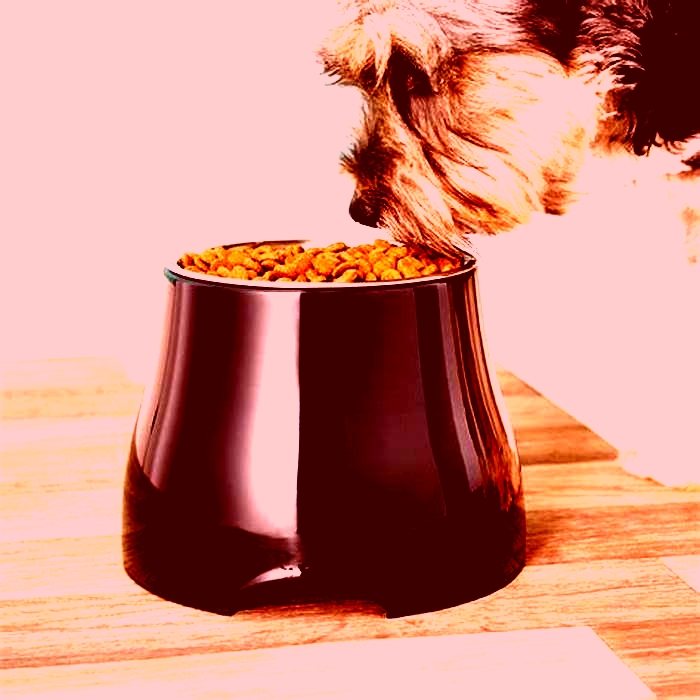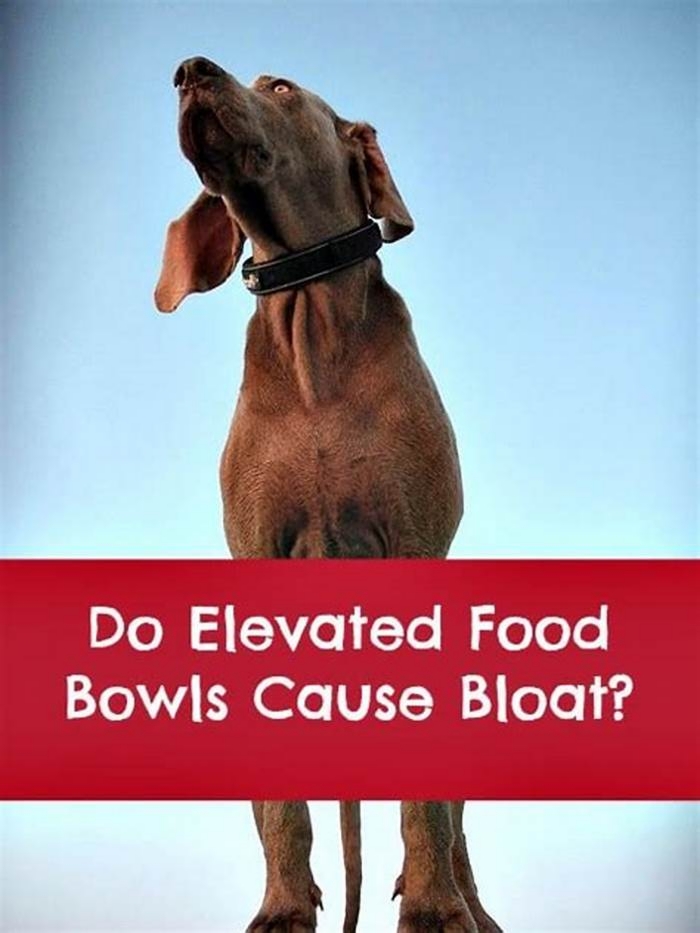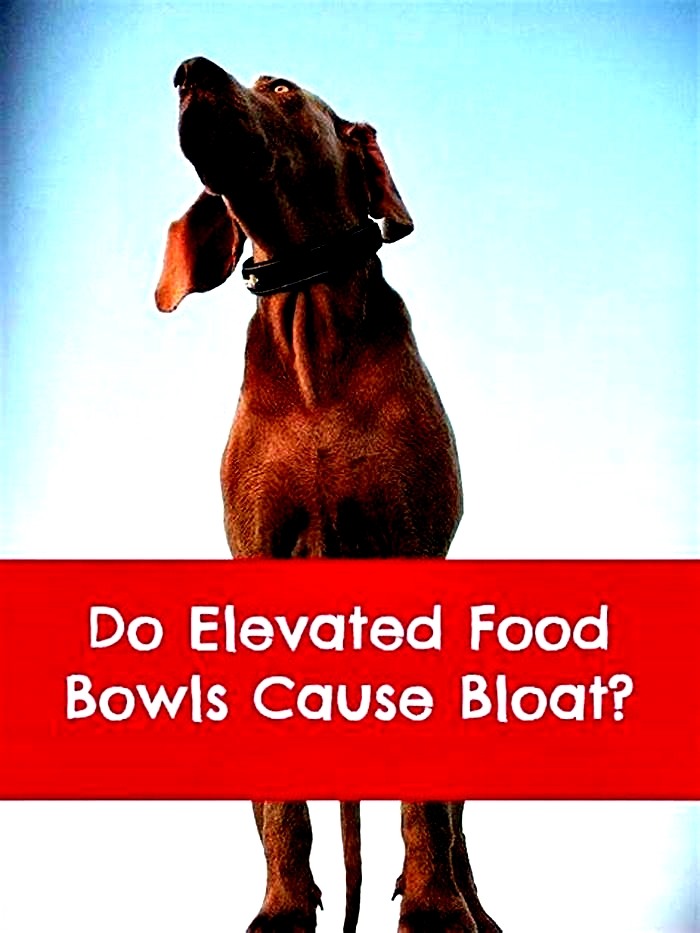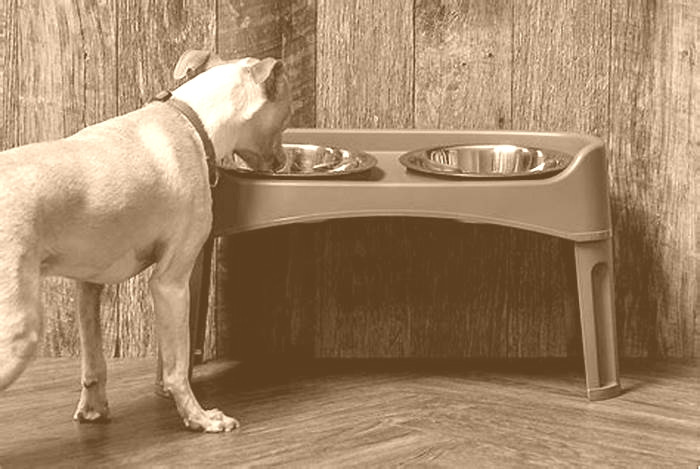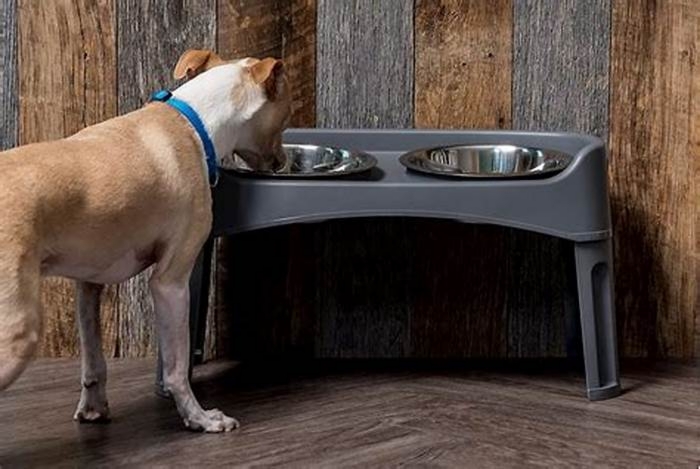Is it better for dogs to have elevated bowls
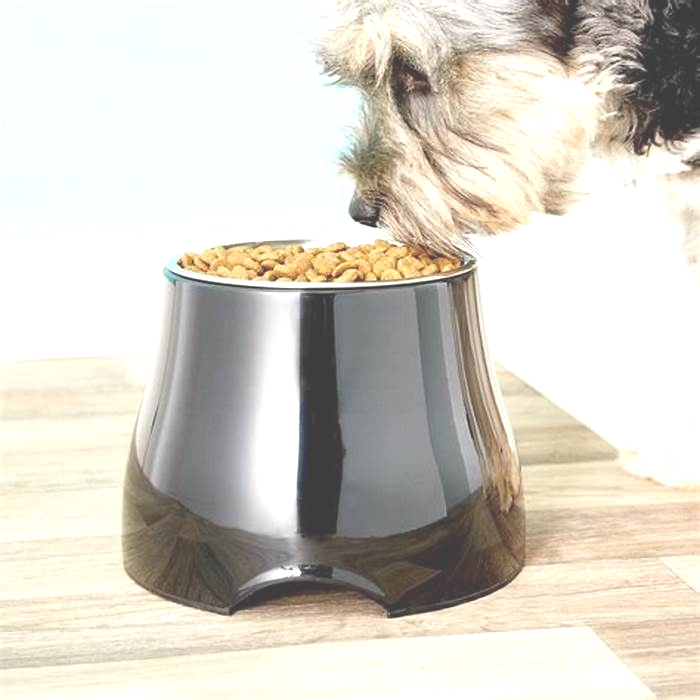
The Pros & Cons of Elevated Dog Bowls A Quick Guide
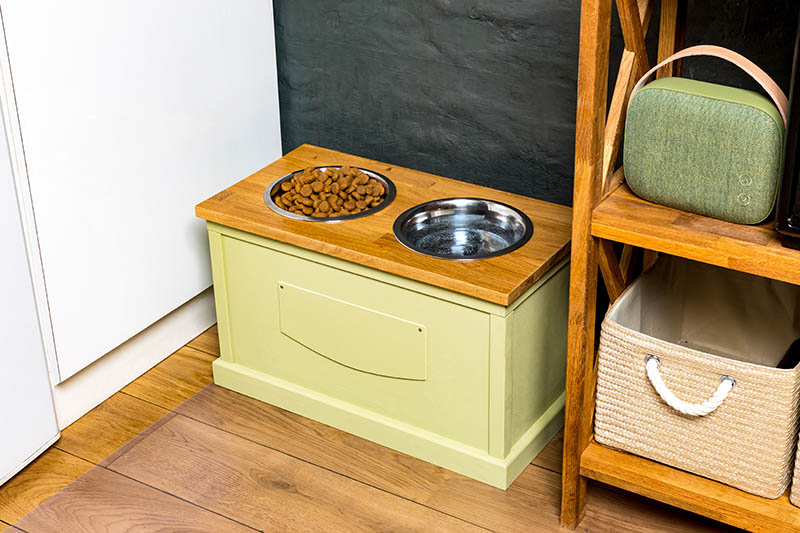
If theres one topic that can cause uproar between dog owners, its feeding time. What your dog eats, when it eats, how often it eats, these are all questions that spark debate. Another hot topic is whether or not your dog should be using an elevated dog bowl. While the science is still out on how effective they really are, there are key benefits to elevated dog feeders that may be great for your dog.
About Elevated Dog Bowls
If your dog struggles or misbehaves at eating time, an elevated dog bowl may be right for you. There are different styles of feeders to fit your dogs needs, ranging in overall size, materials, and design.
What are Elevated Dog Bowls?
Also known as elevated dog feeders, elevated dog bowls are simply dog bowls raised from the floor with a stand of some sort to keep it elevated. They come in a variety of sizes, so theyre useful for both toy-sized and large-sized dogs. Elevated dog feeders make your dogs food closer and easier to eat, so a lot of dogs tend to prefer them. Elevated dog bowl stands are also great to keep water and food bowls together on one feeder, instead of having two separate bowls sliding around on the floor.
What Were Elevated Dog Bowls Originally Invented For?
Elevated dog bowls were first invented as a sure-fire way to prevent bloat, which refers to two life-threatening conditions: GD and GDV.
Gastric Dilatation (GD) causes your dogs stomach to painfully fill with gas, which is already a serious medical emergency. Gastric Dilatation & Volvulus (GDV) is when the gas-filled stomach starts to twist on itself, which cuts off the circulation of the stomach and blood flow.
Both conditions are considered extremely dangerous and should be treated as soon as possible Call your vet immediately if your dog shows one or more symptoms of bloat:
- Distended (bloated) stomach and abdomen
- Anxious pacing and restlessness
- Multiple failed attempts at vomiting
- Rapid breathing, yawning, whining
Do Elevated Dog Feeders Actually Help with Bloat?
While they were first marketed as one of the best ways to prevent bloat, the truth is much foggier than what companies first claimed. The problem is that these claims went unchecked at first, but there is more data available now about the truth of elevated dog feeders.
While they can help with bloat, the risk is not as minimized as companies have claimed. Bloat tends to happen more to fast eaters and dogs who tend to eat a lot of air as they eat, so it really depends on your dog if an elevated bowl can help. If your dog is liable to get bloat, talk to your veterinarian about your options to prevent it.
Pros of Elevated Dog Bowls
Regardless of its original purpose to prevent bloat, there are other benefits of using elevated dog feeders that may help your furry friend out. Here are some pros and cons of elevated dog feeders:
Overall Better Posture While Eating
Because theyre off the ground, elevated dog bowls naturally help your dogs posture while eating. The raised dishes are at a more comfortable height, which will relieve some neck and joint stress from ground-level bowls. Make sure to find the right height for your dog to benefit from the elevated feeder.
Easier for Dogs to Eat
The raised height of elevated dog feeders makes access to food and water easier, especially for senior dogs that struggle to eat from traditional bowls. It also helps all dogs with eating more comfortably, since the angle of their neck changes with the elevation. If your dog tends to struggle with eating, an elevated dog bowl may alleviate some discomfort.
Sturdier & more stable than Normal Bowls
Elevated dog feeders can be especially beneficial if your dog would rather play with his dog bowls. They can be sturdier and stable than normal bowls, built to withstand pushing and sliding. Some elevated dog bowls are even designed to prevent tipping, scratching and biting, depending on the model and brand.
- Better posture while eating
- Easier for your dog to eat
- More stable than traditional dog bowls
Cons of Elevated Dog Bowls
As with most products in any category, there are some disadvantages to elevated dog bowls that may change your decision. Here are some disadvantages of elevated dog bowls:
Expensive Compared to Traditional Bowls
Dogs are expensive, no matter how you look at it. An elevated dog bowl is another expense that may be added to the list. While they may not cost hundreds of dollars, they can still get very costly for the more premium-grade models. Consider what the elevated bowl will do and if it would really help before purchasing one.
Harder to Clean and Maintain
With all of the nooks and crannies, the elevated dog bowl stands can be a real pain to clean and take care of. Some models may have multiple separate pieces, which can trap bacteria. Most elevated dog bowl stands are also not dishwasher safe, so youll have to handwash it.
Doesnt Prevent Messy Eating
If you have a messy eater, dont hope for a miracle unless you buy an elevated dog bowl designed to be mess-free. Water will still be dripped and splashed around, just at a higher height. Extra-large breeds with big muzzles like the English Mastiff are notorious for their messy drinking and eating, so an elevated water bowl may not help with that at all.
- More expensive than traditional bowls
- Feeder stands can be hard to clean
- Can still be really messy (especially slobbery dogs)
Final Thoughts
There are many reasons to buy or not to buy an elevated dog bowl, but your dogs health and wellness should always be a priority. If your dog may benefit from an elevated dog bowl, it may save you money in the long run. Theyre great for most dogs, even for breeds as small as a Yorkshire Terrier.
Dogs are expensive, no matter how you crunch the numbers. Adding another product to the list may get costly, but elevated dog bowl stands are usually a one-time purchase. If youre hesitant about spending the extra money, think about how it may benefit you and your dog in the long run. Also, you may end up buying an elevated dog bowl years later when your dog becomes a senior, so you may want to invest in a stand before that time comes.
If your dog struggles to eat while standing or tends to slide the bowl around, an elevated dog bowl may be the right option. Its important to look for high-quality brands with features that benefit your dogs eating habits. Except for a few small disadvantages, an elevated dog bowl can be a great investment for a more comfortable mealtime experience.
See Also:
Featured Image Credit: Peteris Zalitis, Shutterstock
Are Elevated Dog Bowls Good or Bad?
Elevated dog bowls are a controversial topic any caregivers. This is because there are different theories on its pros and cons. Some say it is a digestion, whereas others say the contrary. The original theory that's supported elevated dog bowls stated that it would help the posture of large and giant breed.
In this AnimalWised article we are going to debunk these myths and tell you whether elevated dog bowls good or bad. We will also mention for which dogs an elevated dog bowl can be beneficial and how to make your own at home.
Are Elevated Dog Bowls Good or Bad?
Elevated dog bowls have their charm. They seem to be better for the posture of our dog and helps them keep tidy when eating. When first advertised they were said to also help our dog with their digestion. However, recent studies have debunked this theory as elevated dog bowls are now tied to an increase in risk for large or giant breed dog to develop bloat torsion. This problem is also known as gastric dilation and volvulus (GDV).
Although GDV can be caused by other factors, it has now been linked to elevated food bowls by a couple of studies. Although it's a treatable disease, bloat can be fatal. The key is early detection in order to act quickly before it becomes fatal. This is why, unless instructed by a veterinarian, it's best to completely avoid elevated dog bowls.
The largest study done on this subject took 1,637 dogs for a period of 6 months without a history of GDV. The breeds included: Akita, Bloodhound, Collie, Great Dane, Irish Setter, Irish Wolfhound, Newfoundland, Rottweiler, Saint Bernard, Standard Poodle, and Weimaraner. After the 6 months of studies, they concluded that approximately 20 and 52% of cases of GDV among the large breed and giant breed dogs, respectively, were attributed to having a raised feed bowl.
If we also think about this logically, the best way for a dog to eat is the way they would do so in the wild. Their ancestors didn't have elevated bowls even if they were large and tall animals. Therefore, it's safe to say that it's unnatural for a dog to eat with an elevated bowl in the wild.
With that being said, some veterinarians will recommend elevated food bowls for dogs that have certain health issues, such as arthritis or a specific injury. In these cases, it's understandable that an elevated food bowl can help them avoid further pain.
Is an elevated dog bowl right for your dog?
Due to the controversial studies, an elevated dog food bowl shouldn't be given to any dog, even to giant dog breeds. Instead, you must first ask your veterinarian if it's correct for your dog. They are professionals that will be able to tell you specifically if your dog needs an elevated dog bowl due to arthritis or another medical issue.
To be more specific, the dogs that are more prone to needing an elevated dog bowl are:
Nevertheless, you will need to ask your veterinarian before purchasing or making your own elevated dog bowl as it may bring more issues than solutions for certain dogs.
Choosing an elevated dog bowl
Once your veterinarian has recommended an elevated food bowl for your dog, it's time to choose the correct elevated food bowl for your dog and their condition.
The correct height
To calculate the correct height of the elevated food bowl, you can measure your dog's height at the withers and then subtract 15cm. It's best to choose an adjustable elevated food bowl so as to be able to change the height with ease.
Choosing bowl
The best options would be stainless steel. However, ceramic or glass is also fine (although easier to break). What we should avoid is plastic bowls.
Different models
There are many different models of elevated dog bowls. Go to your local pet shop and choose the best design for your dog, your home and the design that's easiest for you to clean. Make sure it's high quality too. If you have any doubts, ask your veterinarian for some guidance.
DIY homemade elevated dog bowl
Another option is to make an elevated dog bowl at home. This DIY is super simple and easy to do. It also allows you to customise the bowl for your dog.
You will need:
- Wooden crate
- Two bowls
- Retractable cutter
- Paint, markers, pencils, etc.
Follow these simple steps to make your own elevated dog bowl:
- Flip the crate over and trace the bowls where you want them to be.
- Carefully cut it out with the cutter.
- Now start painting! Use paint, markers, etc. Be creative!
- Let it dry for a couple of hours.
- Now add in the bowls and start using it!
You can also watch our AnimalWised video about DIY projects for your pet. On minute 18:49 you will find how to make your own elevated dog bowl.
If you want to read similar articles to Are Elevated Dog Bowls Good or Bad?, we recommend you visit our Basic care category.
Bibliography
- Glickman LT, Glickman NW, Schellenberg DB, Raghavan M, Lee T. Non-dietary risk factors for gastric dilatation-volvulus in large and giant breed dogs. J Am Vet Med Assoc. 2000;217(10):1492-1499. doi:10.2460/javma.2000.217.1492
- Buckley, Louise. (2017). Are Dogs That Are Fed from a Raised Bowl at an Increased Risk of Gastric Dilation Volvulus Compared with Floor-Fed Dogs?. Veterinary Evidence. 2. 10.18849/ve.v2i1.57.

